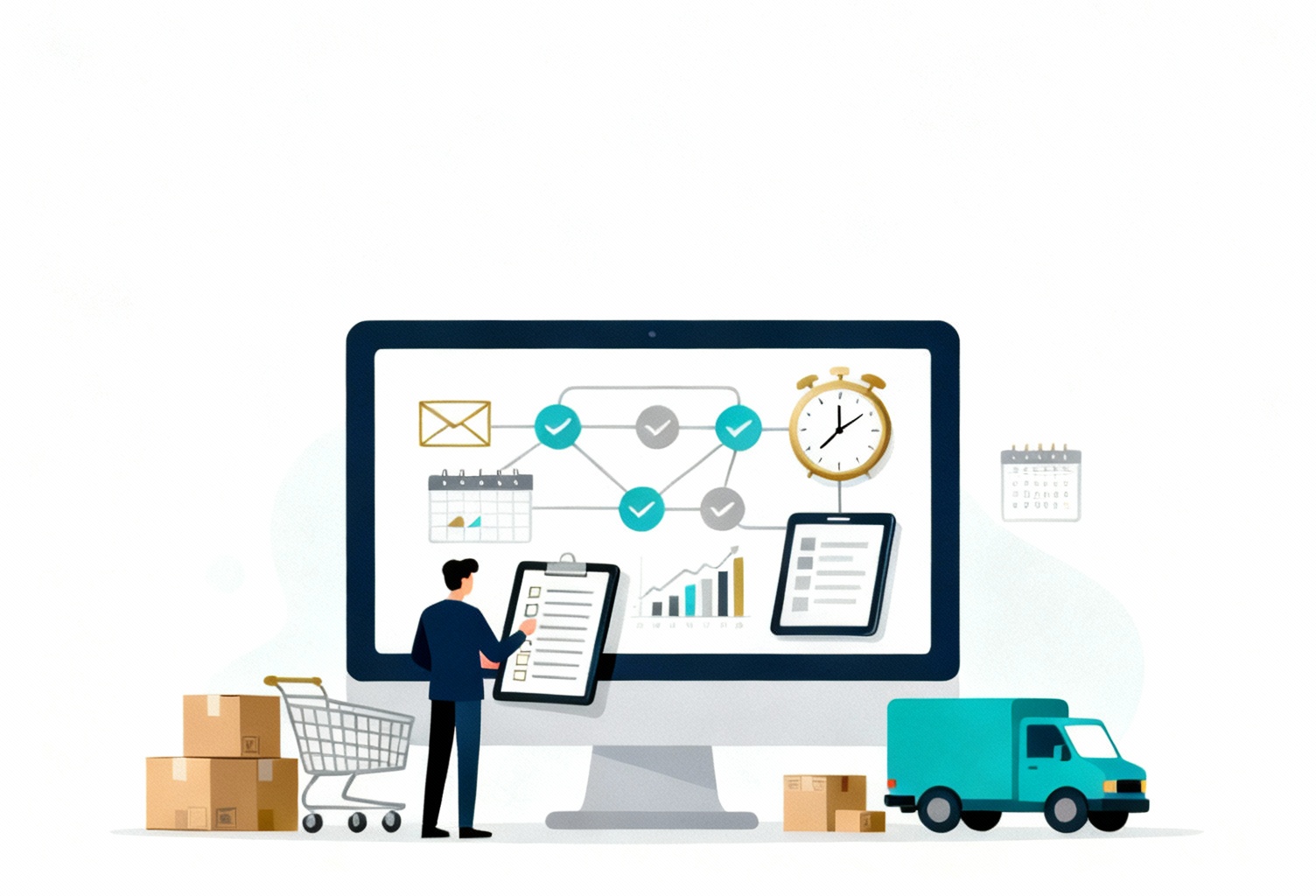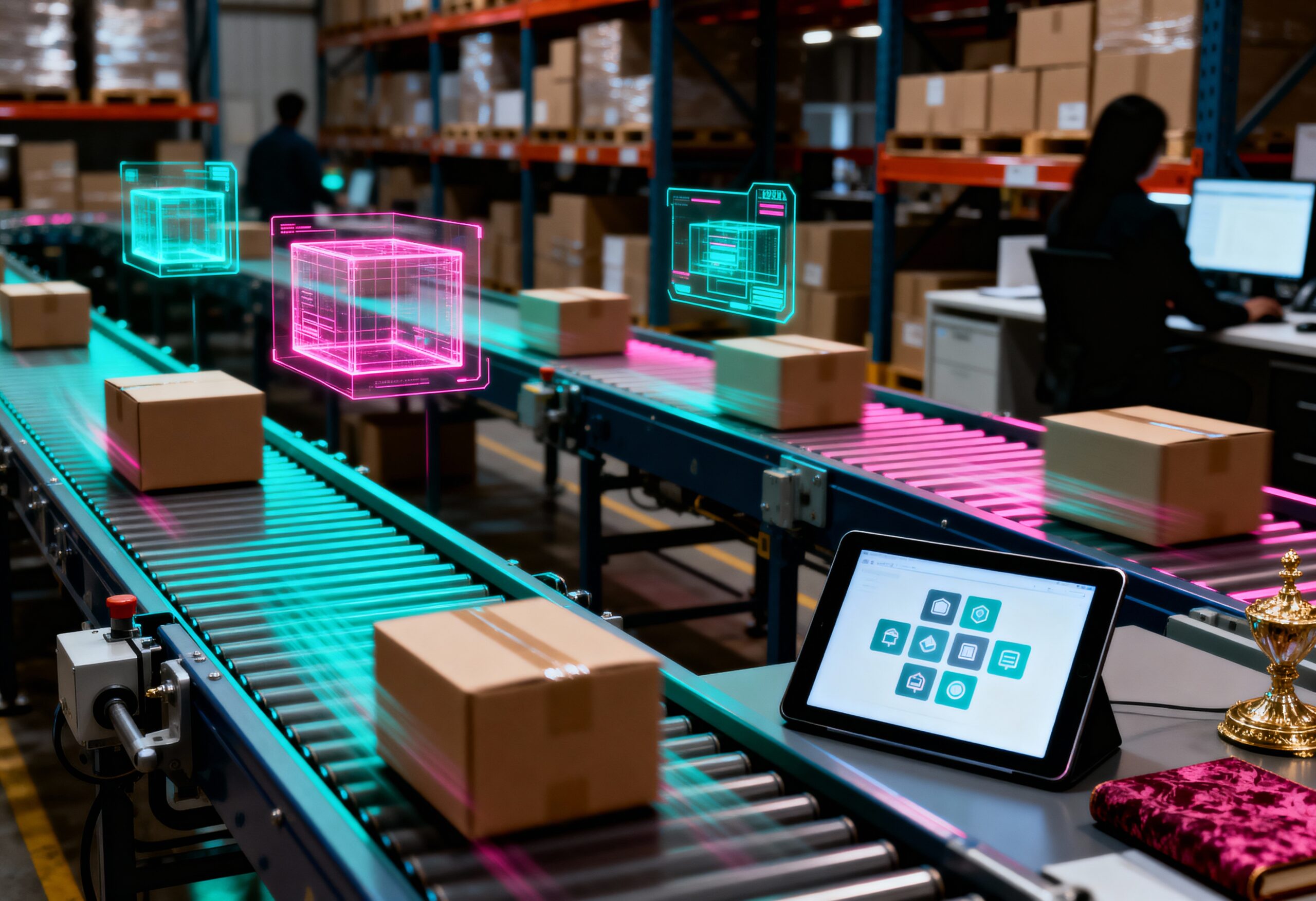Automated flows are no longer limited to abandoned cart reminders, they now extend into personalized promotions, loyalty-driven engagement, and event-based updates that keep customers connected at every stage of their journey. This article from ConnectPOS advises retailers on building an action triggered automated email marketing strategy that translates customer behavior into timely communication. The checklist outlined here serves as a practical guide for businesses that want their marketing automation to work in direct response to real customer actions rather than static schedules.
Highlights:
- Action-triggered emails are automated messages sent right after a customer action, such as browsing a product, abandoning a cart, or completing a purchase. They keep communication timely and relevant.
- A practical checklist for action-triggered email marketing includes setting clear goals, segmenting smartly, automating based on behavior, and refining performance with ongoing data.
What Is Action Triggered Automated Email Marketing?
Action triggered automated email marketing, often called triggered email marketing, refers to sending messages that are automatically activated by a user’s action or behavior. Instead of sending the same content to everyone, the system reacts to what an individual has actually done. Because these emails directly reflect the customer’s interaction, they carry higher relevance and tend to generate stronger engagement than standard promotional campaigns.
Action Triggered Automated Email Marketing: A Practical Checklist
Email is regarded as the best channel for reaching prospects by 73% of B2B marketers. It outperforms other methods such as phone calls, events, and ads. This strong preference highlights the engagement and response rates that email marketing delivers in the B2B sector.

To turn this potential into measurable results, businesses need a clear framework that is an action-triggered email marketing strategy supported by a practical checklist.
Set Clear Goals for Each Campaign
Every action triggered automated email marketing flow should start with a clear objective. An abandoned cart reminder serves a different purpose than a post-purchase follow-up, and both must be designed with specific outcomes in mind. Defining goals helps shape automation rules and ensures that each message is working toward conversion, retention, or customer loyalty rather than becoming noise in a crowded inbox.
Once objectives are in place, they guide how automation is tested, refined, and scaled. A welcome series, for example, may be set to automatically nurture first-time subscribers, while reactivation emails are triggered to re-engage dormant contacts.
When goals remain consistent across different triggers, it becomes easier to measure impact, spot weaknesses, and fine-tune automated journeys so that messaging stays aligned with broader business priorities.
Segment Your Audience Strategically
Effective action triggered automated email marketing depends on smart segmentation. Instead of sending one-size-fits-all messages, automation rules can direct emails to specific groups based on behavior, purchase history, or engagement signals. This ensures that each trigger activates the most relevant content for that customer’s stage in the journey.
For instance, an online fashion retailer might set up automated flows for three core segments. First-time visitors automatically receive a welcome offer designed to encourage their first purchase. Repeat buyers are sent product recommendations generated from past shopping patterns. Dormant customers trigger a “We miss you” sequence that includes tailored incentives to re-engage them.
Automation also prevents irrelevant communication. An abandoned cart reminder to a loyal customer should differ in tone and timing from one sent to a brand-new visitor. By combining segmentation with automated triggers, campaigns feel personalized and purposeful rather than mechanical. Over time, this precision maintains audience interest and drives consistent performance across the customer lifecycle.
►►► Optimal solution set for businesses: Multi store POS, Next-gen POS, Inventory Management Software (MSI), Self Service, Automation, Backorders
Automate Emails Based on Customer Actions
According to Forbes Advisor, the average open rate of abandoned cart emails reaches 50.5%, about 15% higher than regular marketing emails. This shows that trigger-based emails sent immediately after a specific action are far more likely to capture attention.
Automation ensures that emails are sent at the right moment, in direct response to what a customer has done. Timing is everything: a welcome email triggered seconds after sign-up has far greater impact than one that arrives days later. The immediacy of action-driven communication strengthens the sense of relevance and increases the likelihood of engagement.
Beyond timing, automation maintains consistency across campaigns that would otherwise require constant manual oversight. A customer browsing high-value products can be tagged for follow-up, while someone who abandons checkout triggers a different response. When actions are directly linked to campaigns, businesses establish a system that continually adapts to real customer behavior.
Use Mobile-Responsive Email Designs
According to SuperOffice, 81% of users read emails on mobile devices, and 80% of them delete messages immediately if they don’t display correctly. In the context of action-triggered automation, ensuring mobile-friendly design becomes even more important because emails are sent automatically based on customer behavior.
A poorly formatted message can undermine the effectiveness of a triggered campaign before it even reaches its intended audience.
Layouts, fonts, and images need to remain clear and functional across devices, particularly when fast scrolling is common on mobile. Automated campaigns that adapt to screen sizes maintain engagement, making calls-to-action and links easy to tap without errors. Testing across operating systems and devices delivers consistent performance and preserves the impact of every automated message.
Track Performance and Continuously Improve
Action triggered automated email marketing campaigns are never static. Automated flows generate data on open rates, click-throughs, and conversions, offering clear insights into what works and where gaps exist. Using these insights, businesses can continuously refine triggered sequences to align with evolving customer behaviors.
Improvement comes from testing one variable at a time, whether subject lines, calls-to-action, or timing within automated workflows. Each change builds on previous insights, gradually moving campaigns toward peak effectiveness.
Over time, this continuous cycle of monitoring, analyzing, and adjusting turns action-triggered automated email marketing into a dynamic system that reliably drives measurable results.
How ConnectPOS Supports Action Triggered Automated Email Marketing
ConnectPOS automation software turns retail transactions and customer interactions into live triggers for email automation. Instead of treating email as a static channel, it ties sales activity, customer behavior, and operational data together so that messages reach the right audience at the right moment.
This connection between commerce and communication allows retailers to build campaigns that adapt in real time, informed directly by actions at the checkout counter, online store, or customer profile updates.
Key Ways ConnectPOS Powers Action Triggered Automated Email Marketing
- Unified workflows: Product data, customer records, and orders flow into the same system, creating a foundation for marketing triggers. A stock update, a new customer registration, or an order confirmation can each activate tailored messages.
- Behavior-based segmentation: ConnectPOS captures patterns in browsing, purchase history, and frequency of engagement. These details can be used to segment audiences, ensuring that abandoned cart reminders, loyalty rewards, or re-engagement campaigns reach the right customer group.
- Event-driven campaigns: Every abandoned checkout, completed order, or product return can trigger an email. These campaigns go beyond reminders, extending into follow-up guides, product education, and loyalty invitations.
- Dynamic promotions: Discounts, pricing schedules, and product group promotions can be automated in ConnectPOS. This data can be tied to email triggers so customers receive timely notifications about deals aligned with their shopping behavior.
- Cross-channel triggers: ConnectPOS synchronizes data from both in-store and online sales. An in-store purchase can activate an online promotion campaign, while online activity can trigger loyalty updates that extend into physical stores.
- System-wide integration: The platform connects with CRM, ERP, email marketing tools, loyalty programs, and other B2B systems. This creates a wide network where email automation is fueled by data from across the business rather than a single source.
FAQs: Action Triggered Automated Email Marketing
What makes action triggered automated email marketing different from traditional email campaigns?
Traditional campaigns are often sent manually on a set schedule, while action-triggered automation delivers emails in real time based on customer behavior—such as browsing, purchasing, or abandoning a cart. This makes the message more timely and relevant.
Do I need advanced tools to run automated email campaigns?
Most modern email marketing platforms provide automation capabilities. The level of complexity depends on your needs. Basic triggers can be set up with standard tools, while advanced personalization may require integrations with CRM or ecommerce platforms.
How do I avoid overwhelming customers with too many automated emails?
Set frequency caps and suppression rules so that customers don’t receive multiple triggered emails in a short timeframe. Prioritize the most relevant action and ensure each message adds value.
How does ConnectPOS drive automated email marketing?
ConnectPOS captures real-time sales, inventory, and customer behavior data, then turns these insights into automated email triggers that deliver personalized messages at the right moment.
Conclusion
Action triggered automated email marketing reshapes the way retailers communicate, shifting from broad campaigns to dynamic conversations that reflect each customer’s intent. The checklist presented is not just a framework for efficiency but a foundation for growth, helping businesses connect at scale without losing personalization.
ConnectPOS supports this transformation by turning sales, inventory, and customer data into marketing triggers that drive measurable outcomes. For retailers ready to convert automation into long-term value, ConnectPOS provides the technology and expertise to make it happen. Contact us today for more details!
►►► Optimal solution set for businesses: Shopify POS, Magento POS, BigCommerce POS, WooCommerce POS, NetSuite POS, E-Commerce POS



